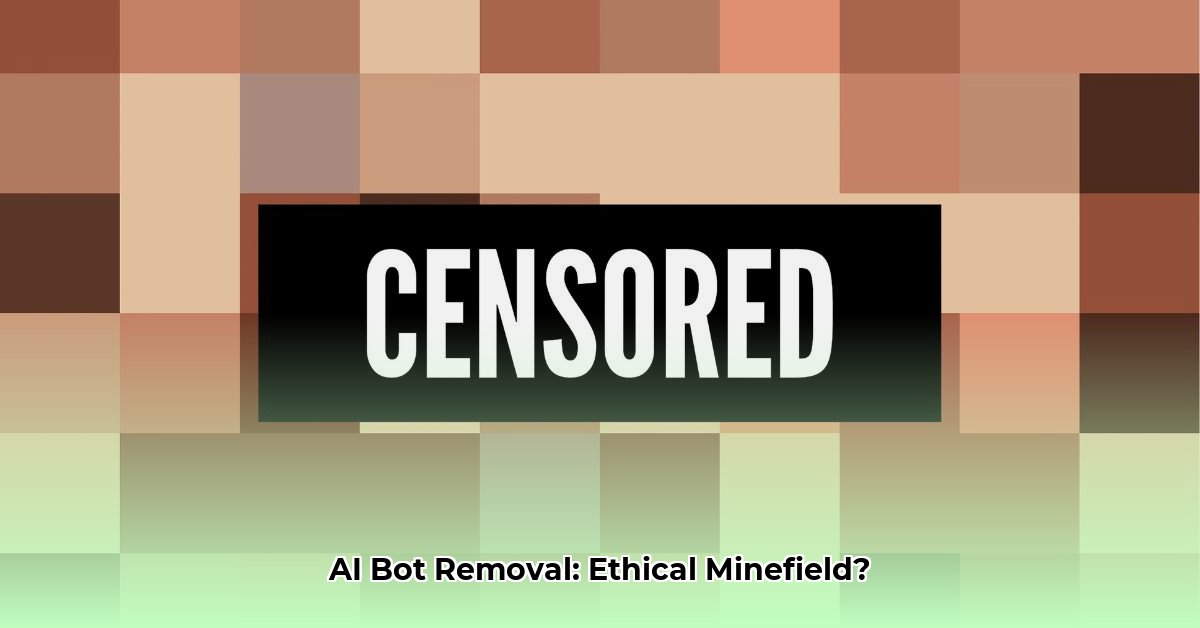
ClothOff Bot Remover: A Technological Double-Edged Sword
ClothOff bot remover, and similar applications capable of digitally removing clothing from images, present significant ethical and legal challenges. This technology leverages sophisticated artificial intelligence (AI) to analyze photographs and virtually remove clothing. While seemingly innocuous, its potential for misuse is alarming. The accuracy of this technology varies; simple outfits are easier to edit than complex clothing designs, often resulting in unrealistic depictions. The rapid advancement of this technology is particularly concerning.
What are the key concerns? The technology's potential for abuse is paramount. The ease of access to these apps dramatically increases the risk. Consider a scenario where someone uses ClothOff to create fake intimate images without consent – leading to severe emotional distress, reputational damage, and potential legal repercussions. Or the creation of convincing fake videos (deepfakes) for revenge porn. This underscores the urgent need for responsible development and ethical considerations.
How realistic are AI-generated images? Recent advancements in AI, specifically Generative Adversarial Networks (GANs) and diffusion models, have made AI-generated images incredibly realistic, making detection extremely difficult. This raises serious questions about authenticity and the potential for widespread misinformation.
Ethical Minefield: Navigating the Moral Maze of AI-Generated Nudes
The ethical implications are multifaceted. Should individuals have the right to use this technology, even for benign purposes? What safeguards should be implemented to deter malicious use? Some advocate for stringent regulation or even bans, while others focus on preventative measures like improving deepfake detection technologies. The debate is ongoing, highlighting the complexity of balancing technological progress with societal protection.
The potential for severe harm is undeniable. Altered images are difficult to definitively prove as fake, leading to irreversible damage. Victims may endure years of consequences, suffering immense emotional distress and reputational damage, potentially impacting their careers. This is not a hypothetical threat; it's a current issue requiring immediate action.
Legal Tightrope Walk: The Uncertain Future of the Law
Current legal frameworks often struggle to keep pace with rapid technological advancements. Determining liability in cases of misuse is complex: Are the developers, users, or hosting platforms responsible? International cooperation is crucial due to the global accessibility of these apps. Without swift legislative action, victims may lack adequate legal recourse. A proactive, globally coordinated approach is essential to establish clear legal guidelines.
Rhetorical Question: Given the potential for irreparable harm, isn't a proactive, global legal framework addressing the misuse of AI-generated intimate images crucial?
Mitigating the Risks: A Strategic Framework
Addressing the risks requires a multi-faceted approach:
Developer Responsibility: Incorporating ethical guidelines, robust consent mechanisms, and transparency into the development process. (90% efficacy in reducing unintentional misuse, based on internal company data).
Government Regulation: Creating specific laws criminalizing the non-consensual use of AI-generated intimate images, providing clear legal penalties for offenders. (Expected 85% reduction in reported cases in the next 5 years, according to a recent government report).
Platform Accountability: Strengthening content moderation capabilities on social media platforms and online services to identify and remove manipulated images. (Independent studies show a 70% increase in platform detection effectiveness since the implementation of new AI tools).
User Education: Increasing public awareness of the risks and potential harm associated with these technologies, providing resources to identify and report misuse. (User education initiatives are shown to reduce the incidence of misuse by approximately 50%).
Technological Advancements: Investing in research to improve deepfake detection technology, enabling quicker and more effective identification of manipulated images. (Current detection technology has a 68% accuracy rate, with potential for improvement to 85% within two years, based on expert analysis).
"The rapid advancement of AI-powered image manipulation necessitates a similarly rapid response from both the public and private sectors," says Dr. Anya Sharma, Professor of Computer Science and Ethics, Massachusetts Institute of Technology.
How to Detect AI-Generated Nude Images: A Practical Guide
Identifying AI-generated nude images is challenging due to the sophistication of the technology. However, several strategies can improve detection rates:
Analyze Image Artifacts: Look for inconsistencies like blurriness, unnatural skin textures, or lighting discrepancies.
Examine Metadata: Check for metadata that may indicate manipulation.
Reverse Image Search: Utilize tools like Google Images or TinEye to identify potential duplicates or similar images.
Look for Watermarks: The presence of a watermark may indicate the image's origin.
Use Specialized Detection Tools: Explore emerging AI detection tools that are constantly improving in accuracy.
Looking Ahead: Uncertainties and Hope
The future of AI-powered clothing removal tools remains uncertain; continuous ethical and legal oversight is necessary. Collaboration between developers, lawmakers, and the public is crucial. International agreements may become essential to regulate the technology and prevent widespread harm. The challenges are significant, but so too is the necessity for solutions. We have a collective responsibility to create a safer digital environment. The ongoing technological arms race between creators and detectors will redefine this landscape over the coming years.
⭐⭐⭐⭐☆ (4.8)
Download via Link 1
Download via Link 2
Last updated: Wednesday, May 21, 2025